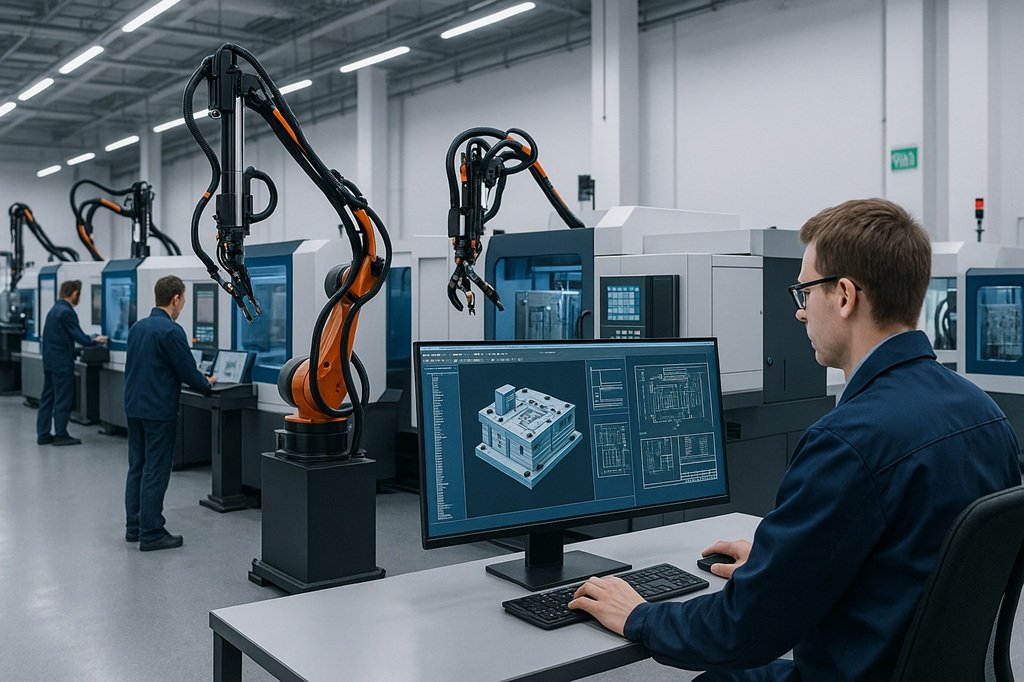In today’s hyper-competitive manufacturing landscape, speed, precision, and scalability have become essential. Companies in industries like automotive, electronics, healthcare, and consumer goods now demand faster lead times, flexible production capabilities, and consistently high-quality components. To stay competitive, manufacturers must adapt quickly to shifting market demands, shorter product life cycles, and tighter tolerances. There’s also growing pressure to reduce production costs without sacrificing quality or reliability. In response, mold factories around the world are upgrading their processes, adopting smarter technologies, and rethinking traditional workflows. These advancements allow them to meet global demand with greater agility, improve client satisfaction, and drive long-term operational success.
To meet these expectations, mold factories are undergoing significant transformations. A china mold factory, for example, is no longer just a parts supplier—it has become a strategic partner, offering end-to-end solutions with global reach and technical expertise. This evolution is being driven by several key trends reshaping the industry.
How Modern Mold Factories Are Scaling Up
Embracing Automation and Smart Production
Automation is now at the heart of scalable mold manufacturing. Mold factories are investing in high-speed CNC machines, robotic arms, and real-time production monitoring systems. These technologies reduce labor dependency, increase accuracy, and allow for uninterrupted 24/7 operation.
Smart production systems using AI and IoT help optimize workflow, detect anomalies, and minimize downtime. As demand grows, automation ensures that factories can scale without compromising on efficiency or product consistency.
Expanding Technical Capabilities and Workforce Expertise
Scaling up also requires technical proficiency. Leading mold manufacturers are prioritizing talent development—offering continuous training for engineers, mold designers, and machine operators. This ensures teams are proficient in the latest CAD/CAM software, mold-flow analysis, and precision tooling techniques.
As product designs become more complex, especially in sectors like aerospace and medical devices, a skilled workforce becomes just as vital as advanced equipment.
Leveraging Mold Simulation and Digital Design Tools
Modern mold factories are accelerating production through simulation-driven design. Mold flow simulation, cooling analysis, and warpage prediction allow manufacturers to validate molds virtually before production begins.
By identifying flaws early, manufacturers avoid delays and material waste—key benefits when handling large-scale or urgent orders. Digital validation also allows for faster prototyping and quicker client approval.
Adopting Flexible, Modular Manufacturing Systems
With global customers seeking both large-volume and limited-run productions, mold factories are shifting to modular production models. These systems can be quickly reconfigured to accommodate different part geometries, materials, or production goals.
This flexibility enables factories to switch between projects seamlessly and efficiently, supporting rapid prototyping, low-volume tooling, and high-volume mass production—all from a single facility.
Strengthening Global Communication and Logistics
Scaling up also means serving international clients more effectively. Leading mold factories now offer multilingual support teams, digital collaboration platforms, and transparent project tracking systems.
Global coordination is enhanced through streamlined logistics and reliable export operations. For instance, a plastic molding china facility can now ship precision parts to Europe, North America, or Southeast Asia within days—backed by real-time tracking and proactive customer service.
Staying Competitive in a Fast-Moving Market
Building Scalable Infrastructure and Production Capacity
One of the most important ways mold factories are scaling is by expanding their physical footprint. Additional production lines, improved tooling departments, and backup systems allow them to handle larger orders and manage peak production cycles without sacrificing speed or quality.
This capacity scaling ensures factories remain agile and responsive—even during global demand surges or supply chain disruptions.
Conclusion: Mold Manufacturing for the Next Generation
Today’s mold factories are not just keeping up with global demand—they’re anticipating it. Through automation, digital design, skilled labor, and flexible infrastructure, they are transforming into highly scalable, tech-driven operations.
By partnering with a modern mold factory—whether local or offshore—manufacturers gain access to streamlined processes, cost efficiency, and high-quality production. As industries push for more customization and faster time-to-market, scalable mold factories are playing a central role in shaping the future of global manufacturing.



